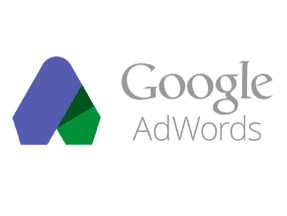Purposeful, content-rich email marketing can produce a return on investment many times greater than traditional advertising, online banners, and even pay-per-click ads. Marketers and business owners who master email marketing may be able to earn more sales and more profit for their companies.
At some level, even bad email marketing can be effective. Just ask the millions of spammers sending billions of messages. About five years ago, the International Computer Science Institute and some folks from the University of California San Diego commandeered a botnet — a network of computers — to see how much spammers might be earning. Their test project, had it been real spam (if there is such a thing as “real” spam), would have earned about $7,000 per day.
In other words, email is powerful. It can drive traffic to your website, keep customers engaged, and help your business sell more. At its most effective, email marketing (a) has a defined purpose, (b) uses thoughtful and useful content, and (b) applies careful measurement and testing.
Email Marketing Should Have a Purpose
Roughly 100 years ago, merchant and advertising pioneer John Wanamaker reportedly addressed advertising’s effectiveness. “Half the money I spend on advertising is wasted,” Wanamaker famously said. “the trouble is, I don’t know which half.”
Surprisingly, this quote often comes up when I am consulting with a retailer or business about marketing, ecommerce, or website design. The person who says it is usually a small business owner or manager seemingly making the point that advertising or marketing is a mystery that simply cannot be measured and therefore, it cannot be improved, made more effective, or even managed properly — a slight of hand, not science.
That is nonsense. With very few exceptions, any advertising can be successful measured. The problem for the Wanamaker-quoting folks is that they start measuring after they advertise without clearly defining why they are advertising in the first place.
In email marketing, before you collect one email or even put a subscription form on your website, know what your email marketing is meant to accomplish.
“There are several reasons to send email,” stated a 2014 VerticalResponse blog post. “To share news, build loyalty, educate, invite people to events, drive traffic to your site, sell your product or service, etc. But what is your specific purpose? Before you create an email, think about the outcome you want.”
This advice could be applied to an individual email or your business’s overall email marketing strategy. Have a purpose in mind when you start.
Good purposes for email marketing might be these.
- Increase profit.
- Increase the number of repeat purchases.
- Increase the number of loyal customers.
- Help customers solve problems.
Your Purpose Should Guide Your Content
Once you have established the reason or, more properly, the purpose for your email marketing, plan your content.
For example, if your purpose is to increase the number of repeat customers your ecommerce business has, use content that encourages repeat purchases. This might dictate some form of content personalization. If you sell consumable products, you could send customers a reminder email. It may be time to buy more razors, more socks, or more toothpaste. And you will want to personalize this for each individual customer, since sending a purchase reminder for a product a customer either just bought or has never bought would not make sense.
This is a very different content task than helping customers solve problems, and it requires rather different content.
Similarly, if your email marketing purpose is to increase the number of first-time customers your store has, you might use a combination of useful or entertaining content with product offers. In this way consumers already familiar with your brand are receiving a regular diet of helpful content with the occasional product or purchase reminder, too.
Use Content to Build Email List
Fundamentally, email list building should follow the development of your email marketing’s purpose and its message content. When these are done in the proper order, you can tell potential email subscribers what to expect from your email messages.
For example, Zulu & Zephyr, a women’s apparel retailer, contains a subtle email subscription form on its site. As a way of encouraging registrations, the form says, “Join us on our adventure and be the first to get updates & specials.”

The subscription form on the Zulu & Zephyr website makes a promise about product updates and special offers.
This email marketing form is promising product-related email messages. It is making a promise about the kind of content subscribers will receive.
The folks at Zulu & Zephyr have a good idea of what they want to send, probably with a purpose of increasing profits or increasing the number of repeat purchases. So those folks can explain clearly what subscribers will receive.
Emails Should Deliver on the Content Promise
The folks who sign up for Zulu & Zephyr emails are expecting to get product-related messages, including discounts and specials. If instead Zulu & Zephyr started sending political messages in support of a presidential candidate or a state or regional issue, subscribers might be surprised and even upset.
In a way, this happened with a shoe manufacturer in 2015. The company had an email subscription form on its site, promising news and information about the company’s products. But in November, this manufacturer sent out a politically charged email message to its subscribers.
The message promoted a somewhat controversial environmental position in Oregon. Some of the email’s recipients disagreed with the company’s views. Those folks started calling retail stores that carried the manufacturer’s shoes. Ultimately, at least one retail chain stopped carrying the brand, eliminating almost half of a million dollars in annual sales.
Conversely, if your email newsletter promises information about environmental politics, don’t send coupons or product announcements.
The fundamental email-marketing lesson here is simply to provide the sort of content you said you would when you asked a site visitor to subscribe.
Measure and Test Emails, to Improve
The final fundamental for email marketing success is to ignore the John Wanamaker quote and measure to determine if your email marketing is working.
Measurement and testing can take a few forms.
You can test to learn if you are achieving your purpose. For example, if your email marketing purpose is to increase repeat purchases, are you, in fact, repeatedly converting email subscribers? Do the folks on your email list tend to make second, third, and fourth purchases more often than your customers overall? Answering these questions will help you improve your email marketing.
You can also test to learn if an individual email message’s headline or call to action is working. Using A/B or multivariate testing, you can come up with the most effective ways to close a sale or engage a reader.
In short, marketers who master the fundamental concepts behind email marketing should help their businesses reach goals, and succeed.




